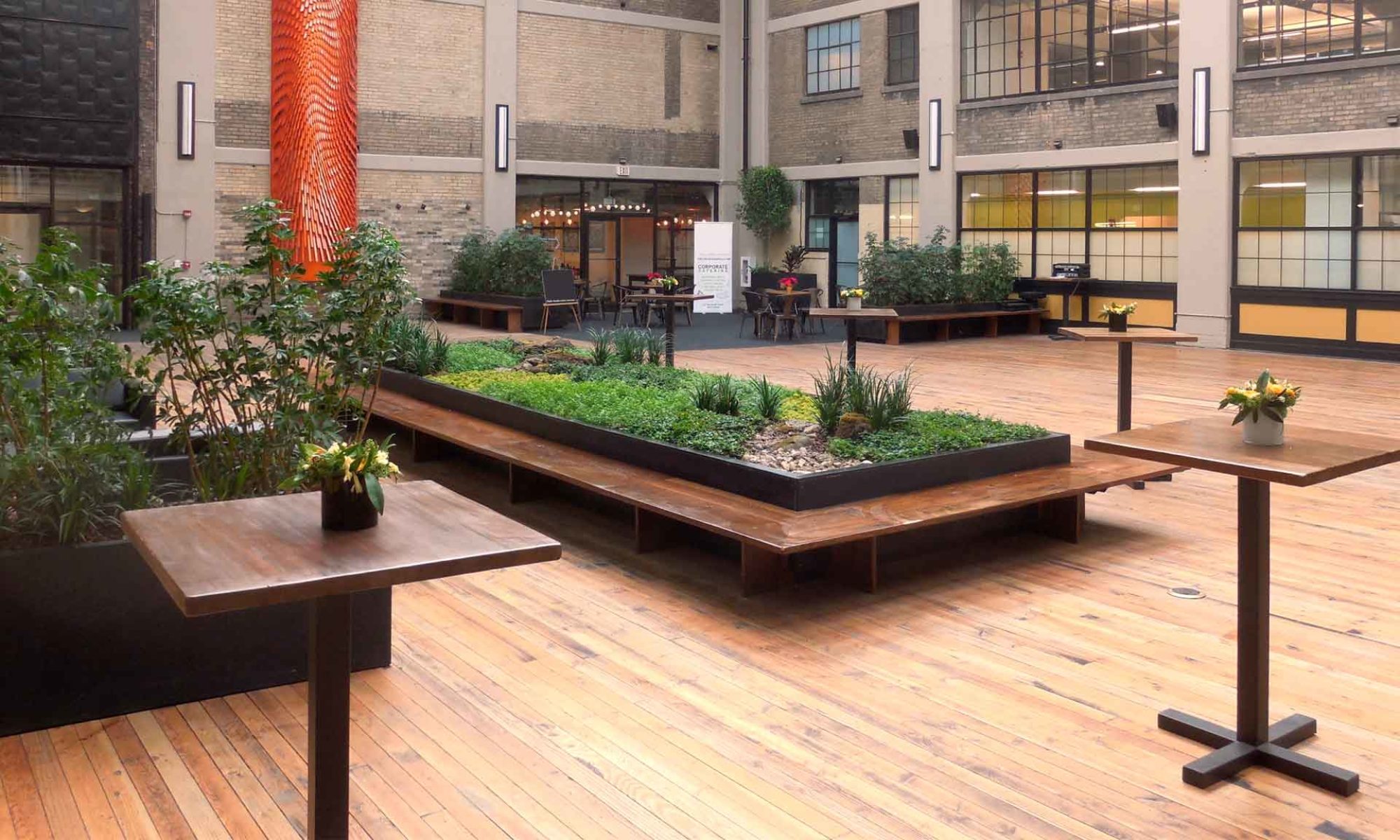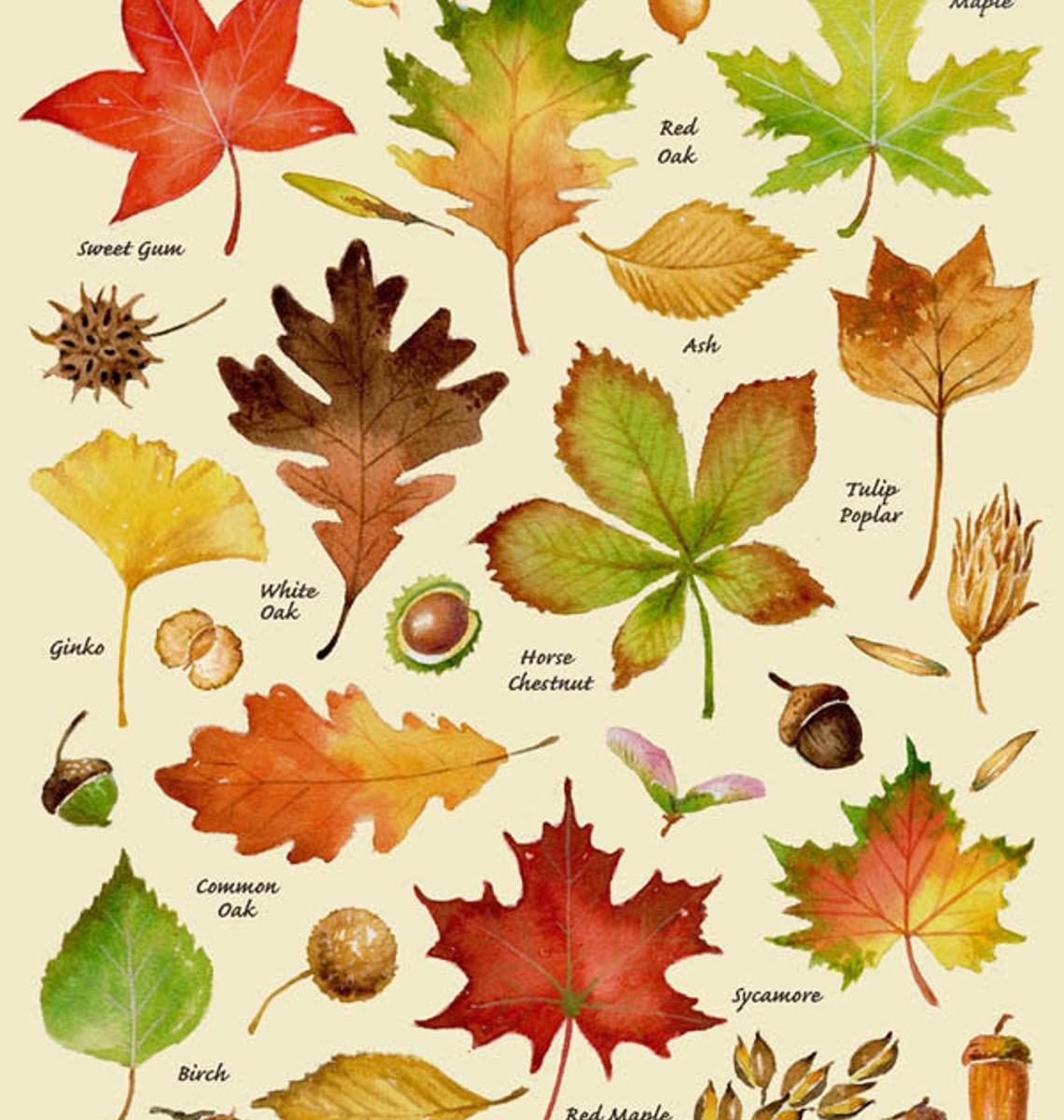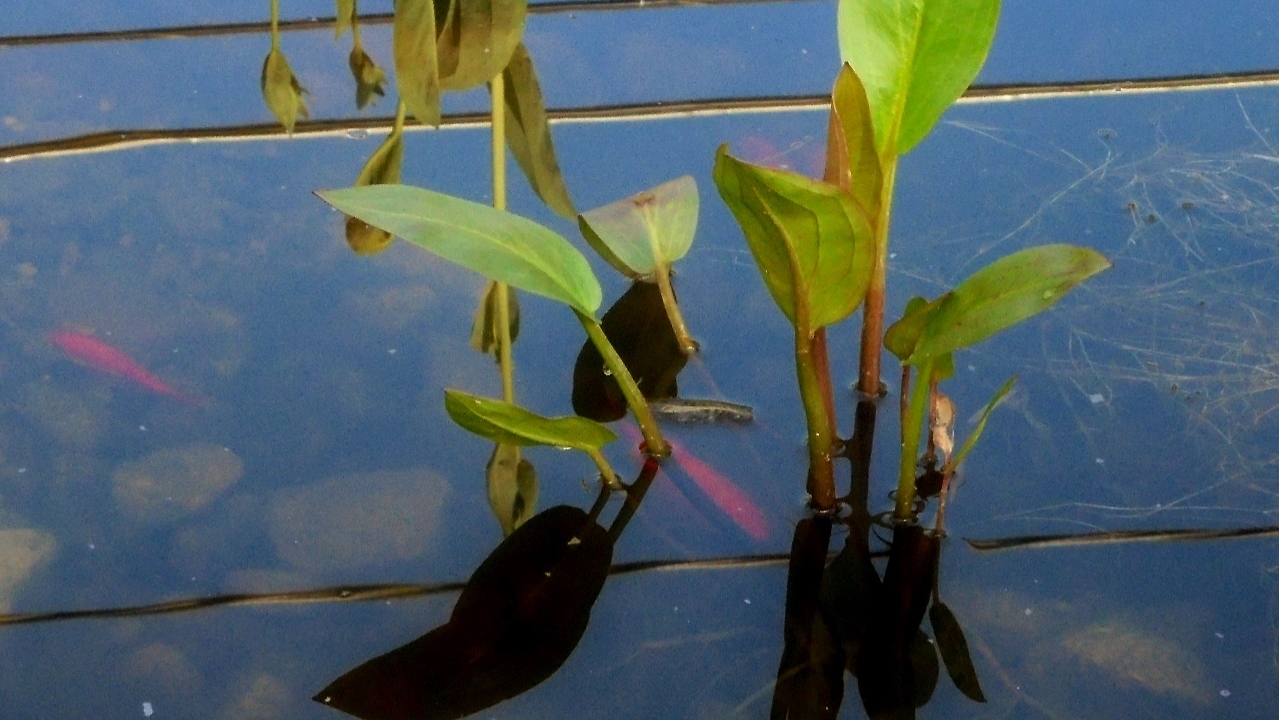Can You Tell The Difference?
Cedars, junipers, pines, spruce and firs are evergreens commonly found and used in our area and landscaping. But, have you noticed parts of them are starting to turn brown or are growing little things on their branches?
Despite the long held belief, all evergreens lose their leaves, just not all at the same time in Autumn like the deciduous trees such as oak, maple, ash, cherry, etc.
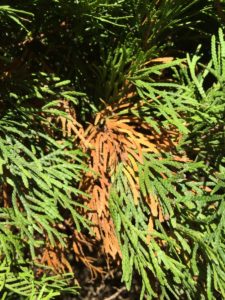 Older leaves of the evergreen group, those on the inside or closer to the trunk branches, slowly turn brown or yellowish and drop off, as shown in the first picture in the Fall.
Older leaves of the evergreen group, those on the inside or closer to the trunk branches, slowly turn brown or yellowish and drop off, as shown in the first picture in the Fall.
Resist the urge to rake up and dispose of these leaves or needles. They are nature’s way of feeding the tree, keeping soil moisture even and limiting competing plant growth over its roots…like a natural weed preventer~
You may also notice the tips of some of the branches turning brown or bluish. 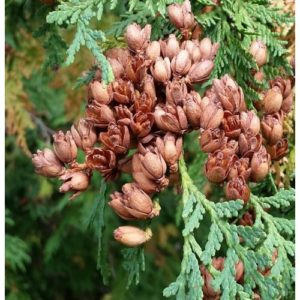
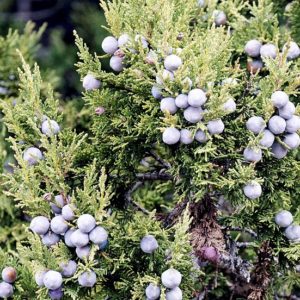 These are actually the seeds of the plant. Some are scale-like cones such as in pines and firs. But others are small brown capsules or fleshy capsules as in cedars or junipers, as shown in these two pictures.
These are actually the seeds of the plant. Some are scale-like cones such as in pines and firs. But others are small brown capsules or fleshy capsules as in cedars or junipers, as shown in these two pictures.
So now you know just a little bit more~
See How Jacrist Can Help You In Your Home Project.
Give us a Call!
Jacrist Creates a More Inviting Yard~
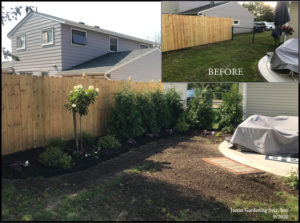 More privacy from the street, better lawn drainage and a paver threshold becomes a base for the barbecue when needed.
More privacy from the street, better lawn drainage and a paver threshold becomes a base for the barbecue when needed.
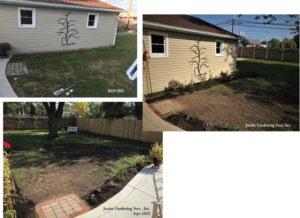
Brick edged paver forms a nice transition into the backyard with complimentary beds framing the view out back from the patio.
Next up?
A collar bed around the maple and a focal point bed, creating a seating area with the bench with wrapping beds along side and back fences.
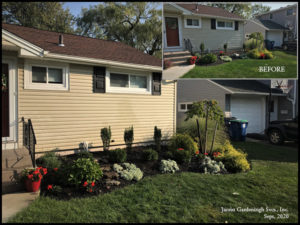 A static composition was improved by a ‘Jacrist Recomposition’, moving plants around and adding a boxwood shrub layer for a more interesting and textural front foundation planting.
A static composition was improved by a ‘Jacrist Recomposition’, moving plants around and adding a boxwood shrub layer for a more interesting and textural front foundation planting.
How May Jacrist Help You?
Preparing Fish for Autumn
As the decreased time of day light begins to be obvious, I turn the timer down to operate the waterfall during daylight hours to conserve the residual heat of the pond. BUT I have the aerator on, 24/7.
A general rule of thumb is to stop feeding fish when temperatures remain under 45 degrees F.
BTW, have you got a backup aerator pump in case it goes out in the winter?
It’s Been A Very Dry Season This Year In Buffalo~
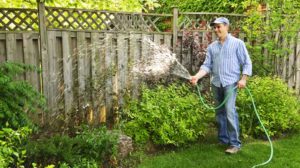 Consequently, new plantings as well as established ones need to be watered at least twice a week to encourage proper root growth for sustaining plant health. Lawns near sidewalks, driveway and streets will transpire more water due to the retained heat of the concrete or blacktop.
Consequently, new plantings as well as established ones need to be watered at least twice a week to encourage proper root growth for sustaining plant health. Lawns near sidewalks, driveway and streets will transpire more water due to the retained heat of the concrete or blacktop. Time To Bring Your Houseplants Inside
If you’re like me, many houseplants have been outside enjoying living in the 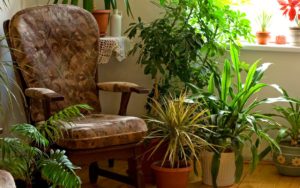 outdoors. But unfortunately with the cooler nights, it’s time to think about bringing them back inside, safely.
outdoors. But unfortunately with the cooler nights, it’s time to think about bringing them back inside, safely.
Here’s a short article to help you help them with the transition.
Bringing Your Houseplants in from the Outside
And on this subject, keep in mind where you put them in the house is subject to the available sun cast during the day in your home due to its exposures and the lessening of available light by how far you place them away from the window. Keep in mind also the drying effect of heat vents. You can mitigate some exposure by placing cardboard over vent so air is diverted sideways instead of upwards.
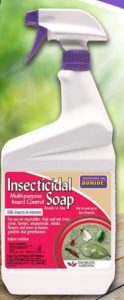 And last thing, remember to pretreat plants with an insecticidal soap to kill any insects harbored in leaves and branches of your plants BEFORE bringing them in.
And last thing, remember to pretreat plants with an insecticidal soap to kill any insects harbored in leaves and branches of your plants BEFORE bringing them in.
